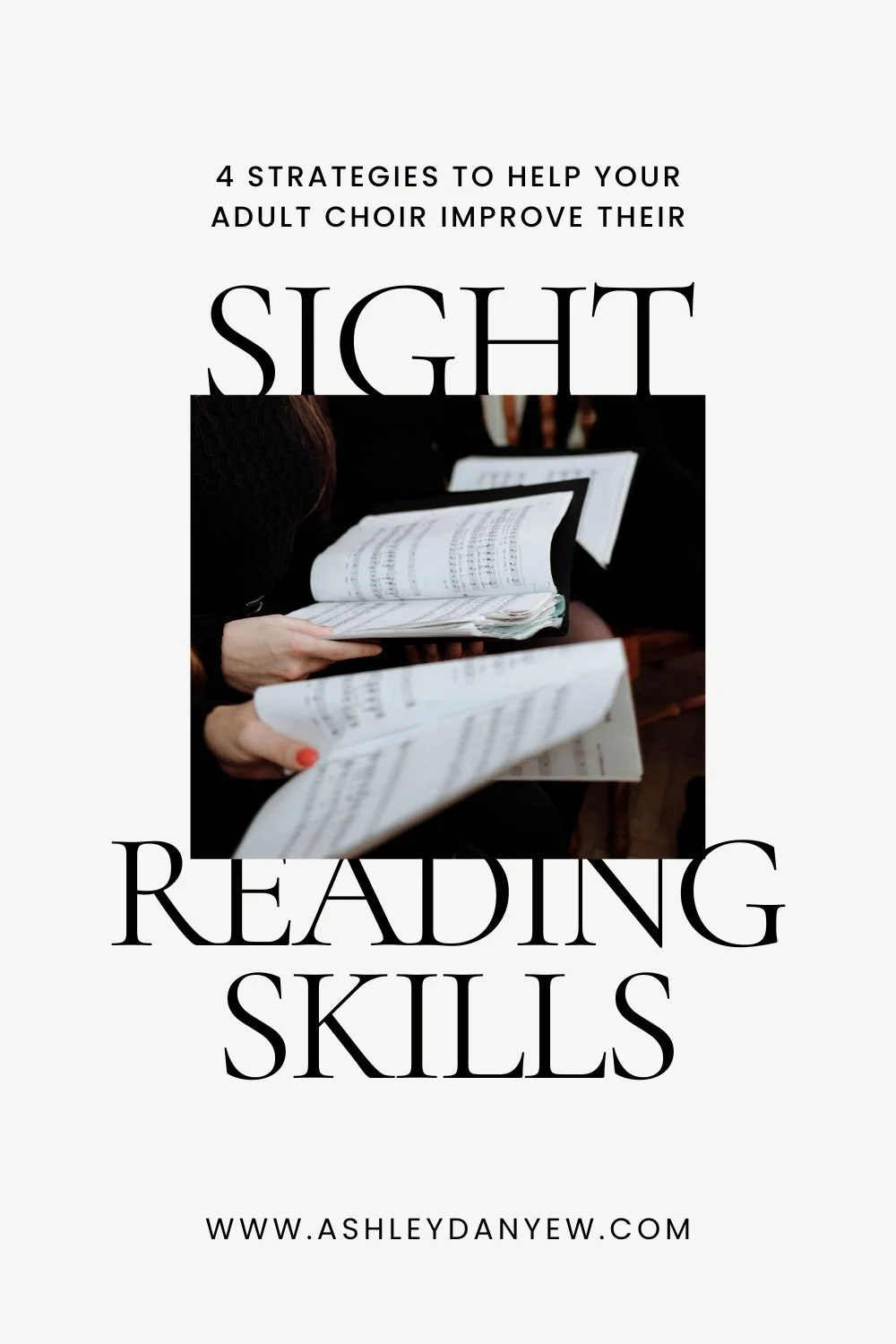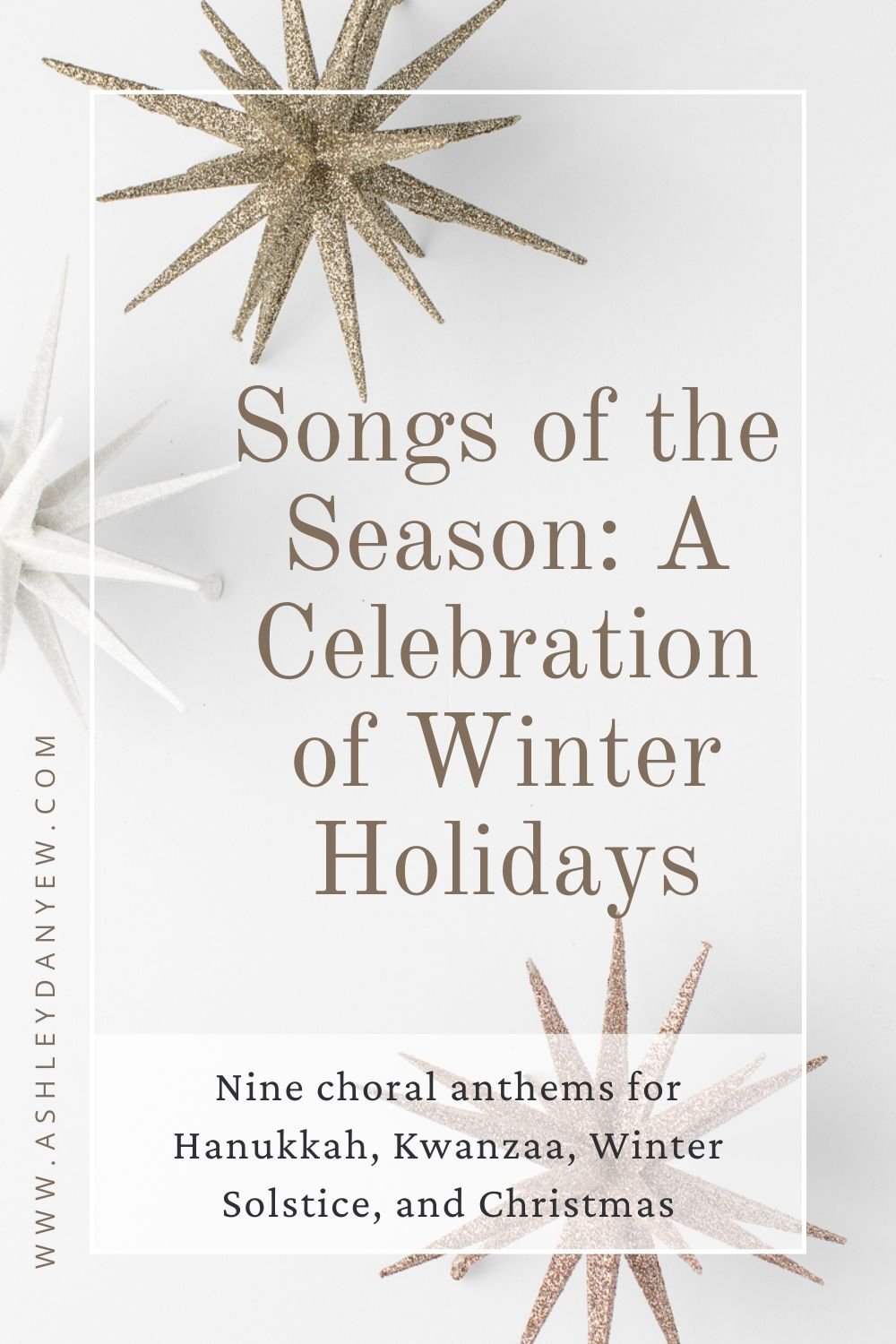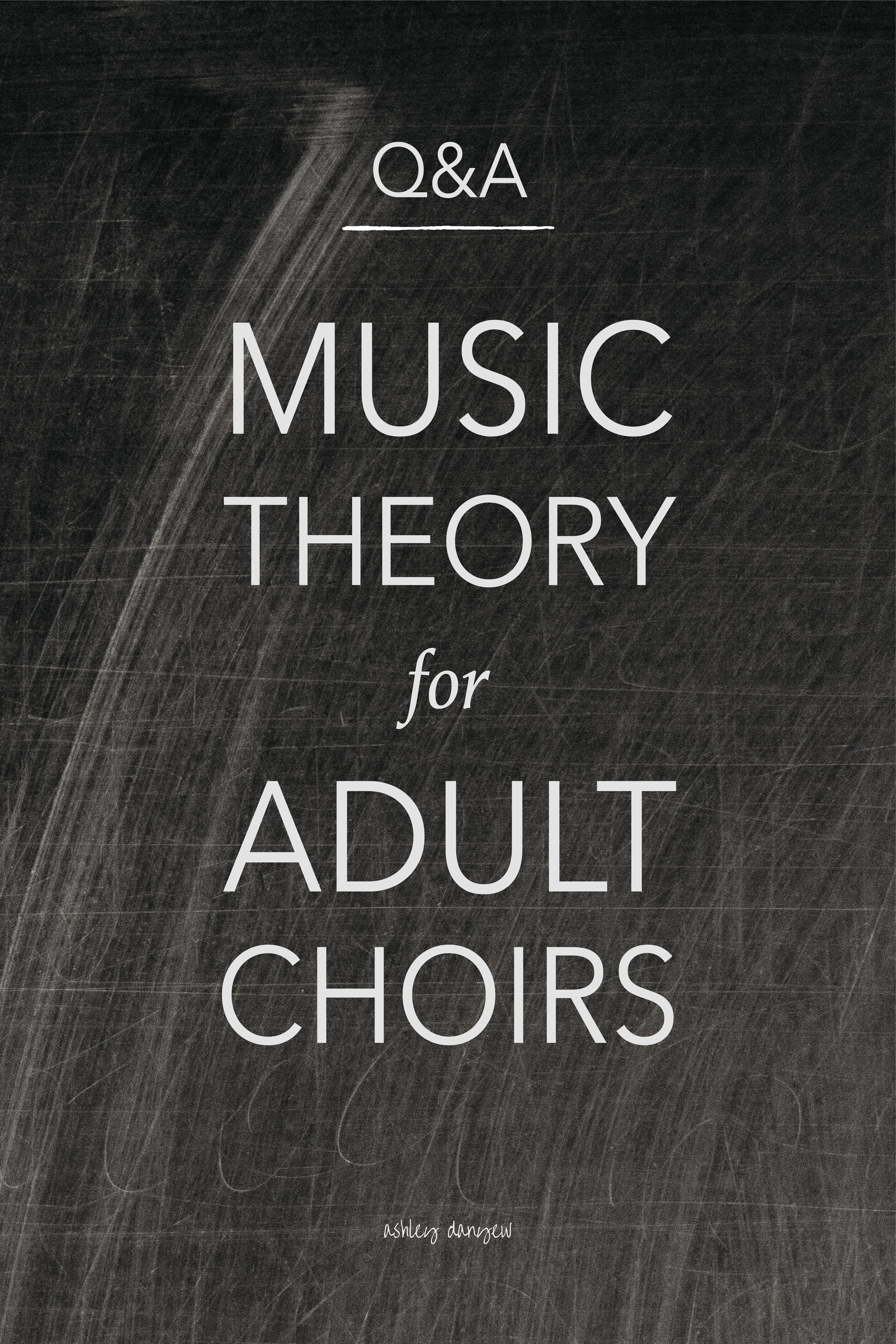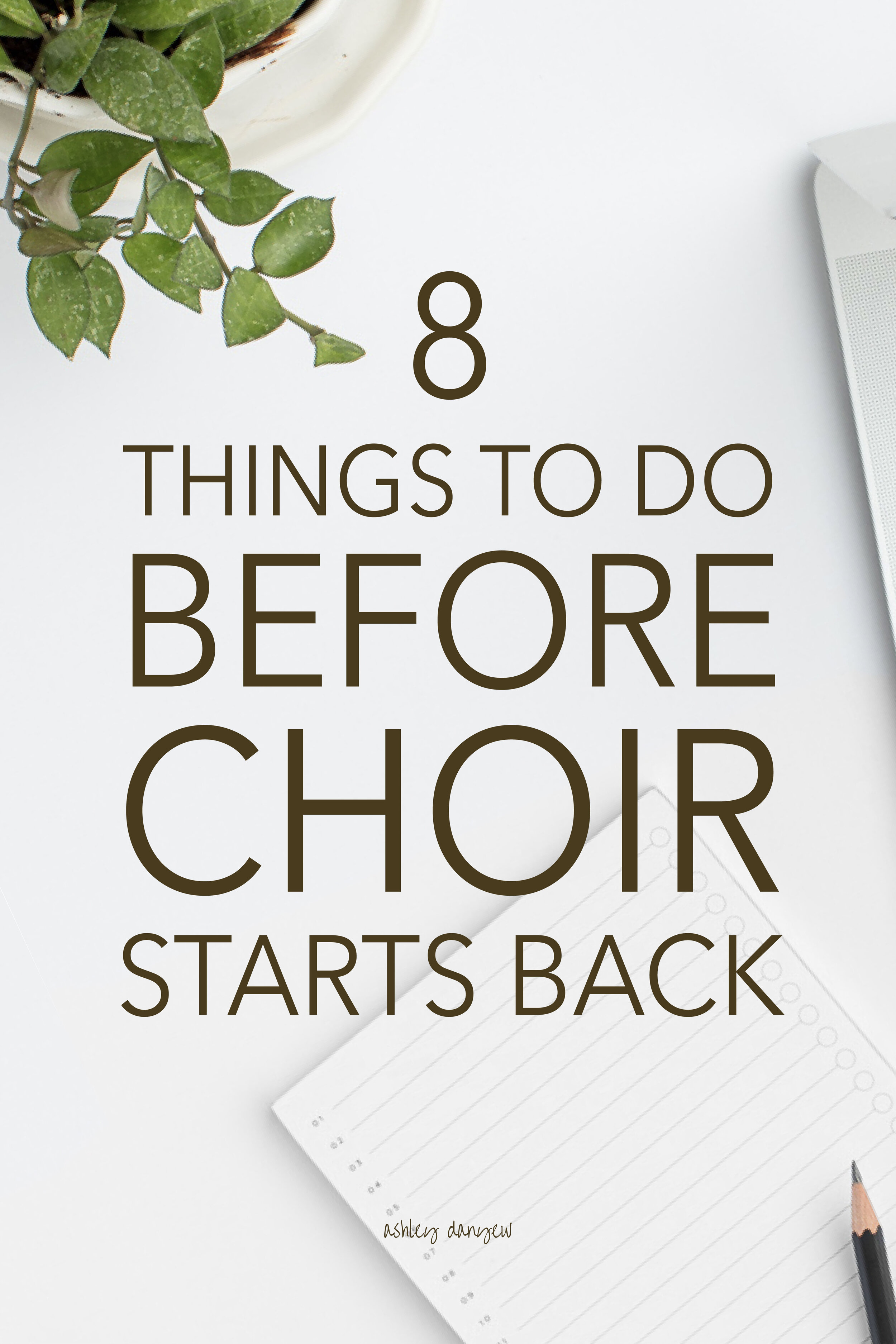A few years ago, I wrote a post called, 10 Theme Ideas for Your Next Choir Program. Today, I’m writing a follow-up post to share seven more ideas to add to your inspiration list.
Choir programs are a great way to keep your choir members engaged and committed to rehearsals (especially toward the end of the academic year, or over the summer) and explore some new music that you wouldn’t normally sing during the church year.
The music you choose will depend on your choir's interests and abilities, your church, and your goals for the music program. Plan a choir program as a fundraiser of some kind or to celebrate a special anniversary for your church. Consider collaborating with other church choirs in the area to create a special community event.
Having an overarching theme can serve not only as creative inspiration for your program, but also a helpful guide for selecting repertoire. Depending on what you choose, you might even consider serving appetizers, dinner, or desserts inspired by your theme to create a more immersive experience.
Looking for a few program theme ideas? Here are seven theme ideas to consider for your next choir program:
7 More Theme Ideas for Your Next Choir Program
*Disclosure: I get commissions for purchases made through links in this post.
1 | Poet
Choose a poet to focus on (perhaps someone local to your area or who has an established body of work) and find a few musical settings of their work. Consider pairing two different settings of the same text back to back to compare the treatment of the text. Hymn texts are a natural choice, but keep in mind that this can also be done with anonymous texts.
For instance, the text from the Holocaust found inscribed on a cellar wall has been set to music by Randall Stroope (Inscription of Hope) and Mark A. Miller (I Believe).
2 | Women in Music
Create a program based on text and/or music written by women. This would be especially appropriate during the month of March (Women’s History Month), but it could work equally well during any part of the year.
A few women composers and arrangers that come to mind:
Elaine Hagenberg
Lynda Hasseler
Ruth Elaine Schram
Becki Slagle Mayo
Mary Lynn Lightfoot
Cindy Berry
Rosephanye Powell
Mary McDonald
Heather Sorenson
Alice Parker
3 | Nature
Similar to planning a program based on a season or the seasons in general, a nature theme can provide a wonderful, rich foundation for your program planning.
Choose hymns, songs, or anthems that describe different elements of nature: trees, mountains, water, sky, etc. Group the pieces together in a way that makes sense to you, and pull together a few poems or other readings that tie in to read before each set of pieces.
Here are a few pieces that come to mind:
For the Beauty of the Earth (arr. John Rutter)
How Great Thou Art (arr. Dan Forrest)
Lift Thine Eyes (Felix Mendelssohn)
Come to the Water (arr. Lynda Hasseler)
Down to the River to Pray (arr. J.A.C. Redford)
Here I Am, Lord (arr. Craig Courtney)
Free Resource
10 Theme Ideas for Your Next Choir Program
This workbook includes 10 creative theme ideas for your next choir program, plus space for you to jot down some of your own ideas.
4 | A Day in Music
Choose music that represents various parts of the day: dawn, morning, midday, afternoon, evening, and night. Vary the style of the music so you have some contemplative selections and some that are more upbeat and energized. Consider a few prayer settings for morning and evening, and perhaps a lullaby for the close of the program.
A few pieces that come to mind:
i thank You God for most this amazing day (Eric Whitacre)
Amazing Day (Rebecca Thompson)
This Is the Day (Mark Hayes)
Always Something Sings (Dan Forrest)
Light of a Clear Blue Morning (arr. Craig Hella Johnson)
In That Great Gittin’ Up Mornin’ (arr. Mark Hayes)
Hail the Day that Sees Him Rise (arr. Dan Forrest) - Easter
Christ is the Morning Star (John Rutter) - Advent
Wake, O My Soul (Steve Danyew) - Christmas
5 | Community Sing
There's something inspiring about community singing: the act of bringing people together, of all ages and all walks of life, and singing something.
Music is often considered an outward expression of the soul. Creating music together—with children and babies and grandmas and youth; with those who read music and those who know the words by heart and those who are experiencing it for the first time—it's the expression of all of our souls combined.
For this reason (among many others!), community singing can be a great way to create engagement and connection and bring people together in new and memorable ways.
Include a segment of folk songs in your next program—music that can be easily taught by rote with a capable song leader and simple accompaniment (on piano, guitar, or even ukulele, if you have one). Try a canon/round or a partner song, where half the room sings one song and half the room sings another song at the same time.
Here are a few ideas:
Kookaburra
6 | Art Inspiration
Choose a piece of artwork to go with each piece on your program. Project the art on a screen or a blank wall as you present each piece and talk about why you chose each one.
Here are a few helpful sites that have collections of artwork in the public domain:
7 | Musical Pairs
Choose some of your favorite pieces (or your choir’s favorite pieces) and look for connections between them—ways to make pairs. Perhaps two settings by the same composer, or two versions of the same text, like I mentioned before. Or, dig a little deeper and look for shared musical features (structure, form, harmony, instrumentation, melodic or rhythmic material) or historical context.
Once you have your program grouped into pairs, write a brief explanation for each one describing the character of the pieces, the person or people who wrote them, and what they have in common.
Here are a few other types of musical pairs to consider:
A hymn for the congregation to sing + an arrangement of the same hymn for the choir to sing
A choral setting of a hymn or song + an instrumental setting of the same hymn or song
Pieces that have the same programmatic theme (e.g. night—nocturne, lullaby, moonlight, etc.)
I’d love to hear from you:
Which of these theme ideas is your favorite? Let me know in the comments below!







































